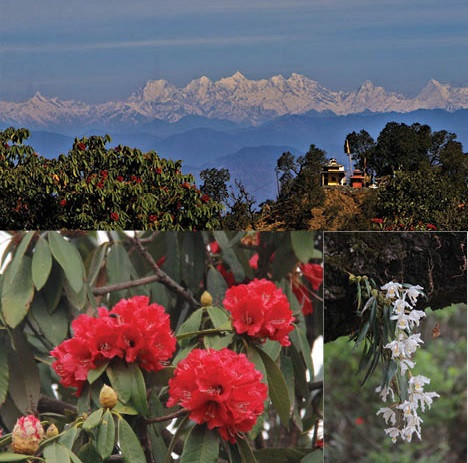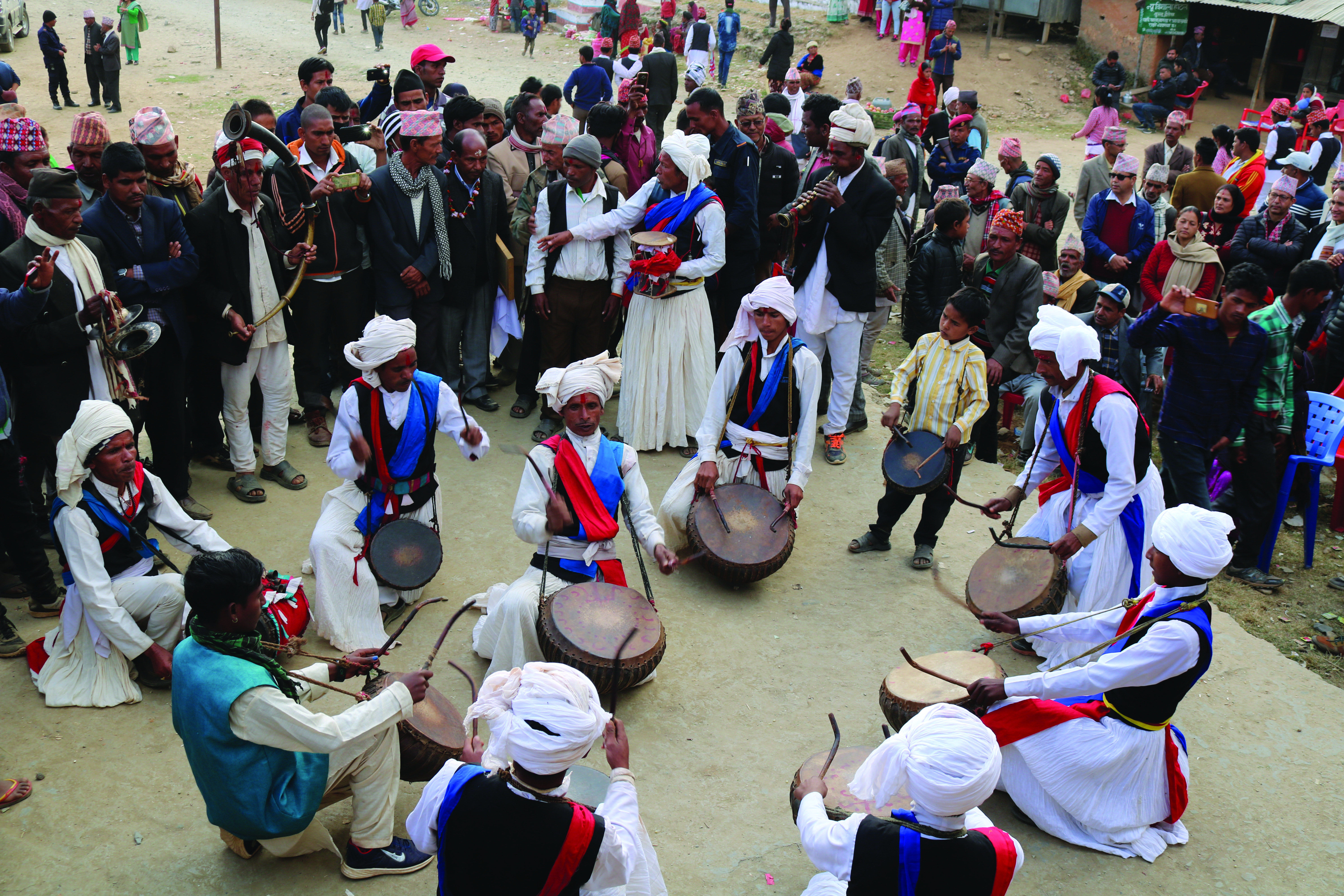Dailekh: An Open Museum
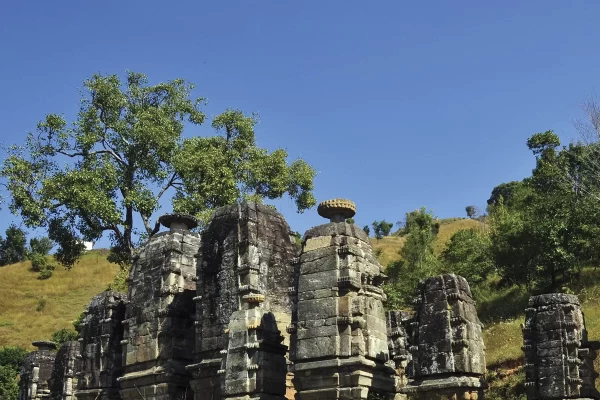
Dailekh is a hilly district of Karnali Province. Dailekh is famous for its rich cultural heritage, landscapes, historical significance and spellbinding natural beauty. Dailekh offers a blend of traditional Nepali rural life and the potential for development through its natural resources and tourism. Nearest airport of Dailekh is Surkhet Airport that resides 65km away.
Guranse, Dailekh (A Stop for Good Food and Peaceful Surroundings)
Guranse is a part of Dailekh that has gained popularity for its exceptional cuisine. It lies towards Dailekh’s border with Surkhet, in ward no. 5 of Guranse Rural Municipality. Many travelers going towards Rara from Surkhet make a pit stop at Guranse. Those coming down from Rara also frequently stop in Guranse for the food. Among other staples of the Nepali diet, dal, chicken, selroti, and veggies are considered to be a delicacy here. Guranse got its name from the nearby Laliguras forest.
It is recorded that people started moving into this region in 1981 AD, and the popularity of Guranse as a dining destination grew since then. On a clear day, you can see the peaks of Mt. Kanjirowa and Apishaipal from Guranse. It is also well known for its flora like the orchids (sunakhari) which cover everything from trees, rocks, and the ground.
The same holds for kafal when it is in season. Guranse has standard hotels on both sides of the highway with a newer, modern hotel having been recently established. The hotels have a warm, welcoming aura. Guranse’s climate is quite cool. That is why many young people from neighbouring Surkhet and Nepalgunj flock here during summer. While some stay for a day, others spend the weekend.
The small town of Guranse has become well-known as a relaxing getaway destination. In order to promote tourism, the government of Karnali funded the construction of a viewing tower here. Statues of wild animals such as crows were also erected as an attraction and the place has become popular on the video-sharing app, Tiktok. Guranse is an attraction in and of itself. You can stop by Guranse for food on the way to or from Rara Lake, Jumla, or the Dailekh shrines. Guranse Bazaar is located 20 kilometers west of Surkhet.
Panchakoshi Dailekh Tour (A Spiritual Quest of Five Temples for Inner Rejuvenation)
Dailekh is home to numerous religious landmarks. Panchakoshi is one such destination which got its name from a group of five pilgrimages, Shirasthan, Navisthan, Padukasthan, Dhuleshwar and Kotilasthan. All five are considered to be Panchakoshi pilgrimages according to the Hindu scripture Vaishnawor Purana. These shrines of Panchakoshi have inspired several myths and they link to the legendary Sri Swosthani Bratakatha as well. People have been traveling to the Panchakoshi pilgrimage since time immemorial in the hopes of providing salvation to their ancestors, getting wishes granted, calming the mind, and cleansing the spirit. Two of the temples have natural gas flames burning from underground. There are three flames in Shristan and two in Navisthan. Shristan is believed to be the location where Mahadev dropped Sati Devi’s head while carrying her corpse across the universe.
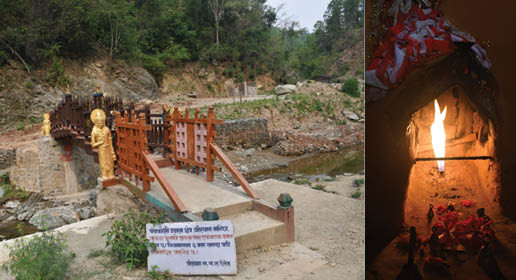 The fire which burns here is known as Jwala Mandir. A Kal Bhairav temple is also situated here. Similarly, Sati Devi’s navel is said to have dropped in Navisthan. Both the Indra Jwala and Badijwala temples can be found here as well as a Kalbhairav temple. No one, it is stated, should ever look directly at Kalabhairav, including priests. The picturesque Navisthan can be seen on the river’s edge. There are Sami trees that are hundreds of years old and idols of numerous deities. There is also a school where students can learn Sanskrit. Padukasthan is believed to be the spot where Sati Devi’s feet landed as Shiva was carrying her body. There is a rock here that looks like feet. This shrine also had gas flames; however, the Paduka river flooded on 29 January, 1978, causing damage to the temple and extinguishing the flame. The temple grounds here are filled with statues including Lord Buddha.
The fire which burns here is known as Jwala Mandir. A Kal Bhairav temple is also situated here. Similarly, Sati Devi’s navel is said to have dropped in Navisthan. Both the Indra Jwala and Badijwala temples can be found here as well as a Kalbhairav temple. No one, it is stated, should ever look directly at Kalabhairav, including priests. The picturesque Navisthan can be seen on the river’s edge. There are Sami trees that are hundreds of years old and idols of numerous deities. There is also a school where students can learn Sanskrit. Padukasthan is believed to be the spot where Sati Devi’s feet landed as Shiva was carrying her body. There is a rock here that looks like feet. This shrine also had gas flames; however, the Paduka river flooded on 29 January, 1978, causing damage to the temple and extinguishing the flame. The temple grounds here are filled with statues including Lord Buddha.
While the other four temples are situated next to a river, Dhuleshwar lies on top of a hill. It is found in the middle of the Vaishnaswor Jwala area and is said to be the place where gods make their home. It is known as Dhuleswor because the dust which arose from Sati Devi’s tomb is said to have settled here. Lastly, the Kotila temple, located on the banks of Chamgad river is known as the place where the kothi (mole) of Sati Devi is said to have fallen. The surroundings of the temple have Charu trees which are said to have been brought down from heaven.
These five temples have fairs which take place on different occasions. During Mahashivratri, a fair takes place in Shirasthan; on Maghe Sankranti, in Navhisthan; on Janaipurnima, in Paduka; on 1st Baisakh, in Kotila; on Navratri, in Dhuleshwar; and Mansir Purnima, at the Siddheshwar Mahadev Temple. There are general shops around the temple areas, however food and accommodation is not available. For that, pilgrims you have to stay in Dailekh.
According to the Himavata Khanda of the Skanda Purana which references the Panchakoshi Parikrama, the pilgrimage should start from Sristhan, then go to Navisthan, Padukasthan, Dhuleshwar, and Kotila. A road system links all of the Panchakoshi Tirtha temples together. Jeeps and motorcycles make it possible to see Panchakoshi in a single day.
The Devals in Bhurti
While going for the Panchakoshi tour, you can also visit the Devals of Bhurti village. The twenty-two stone columns are clustered together and are carved with artistic details. Since there are no idols, no specific rituals are associated with these devals. There is no indication of when or by whom these were created. Locals say that the five Pandavas erected this temple in a single night during the Mahabharata. Cultural researcher Bishwa KC states, “This temple is a mausoleum of the royal family of Mallas of the Khas kingdom.” Since it is a mausoleum, no one knows who constructed it. KC claims in his book “Kirtikhamba” that Dailekh is home to 120 such devals. These devals have the potential to attract visitors as well, however they need to be preserved properly.
Mahabu (A Potential Center for Spiritual Tourism)
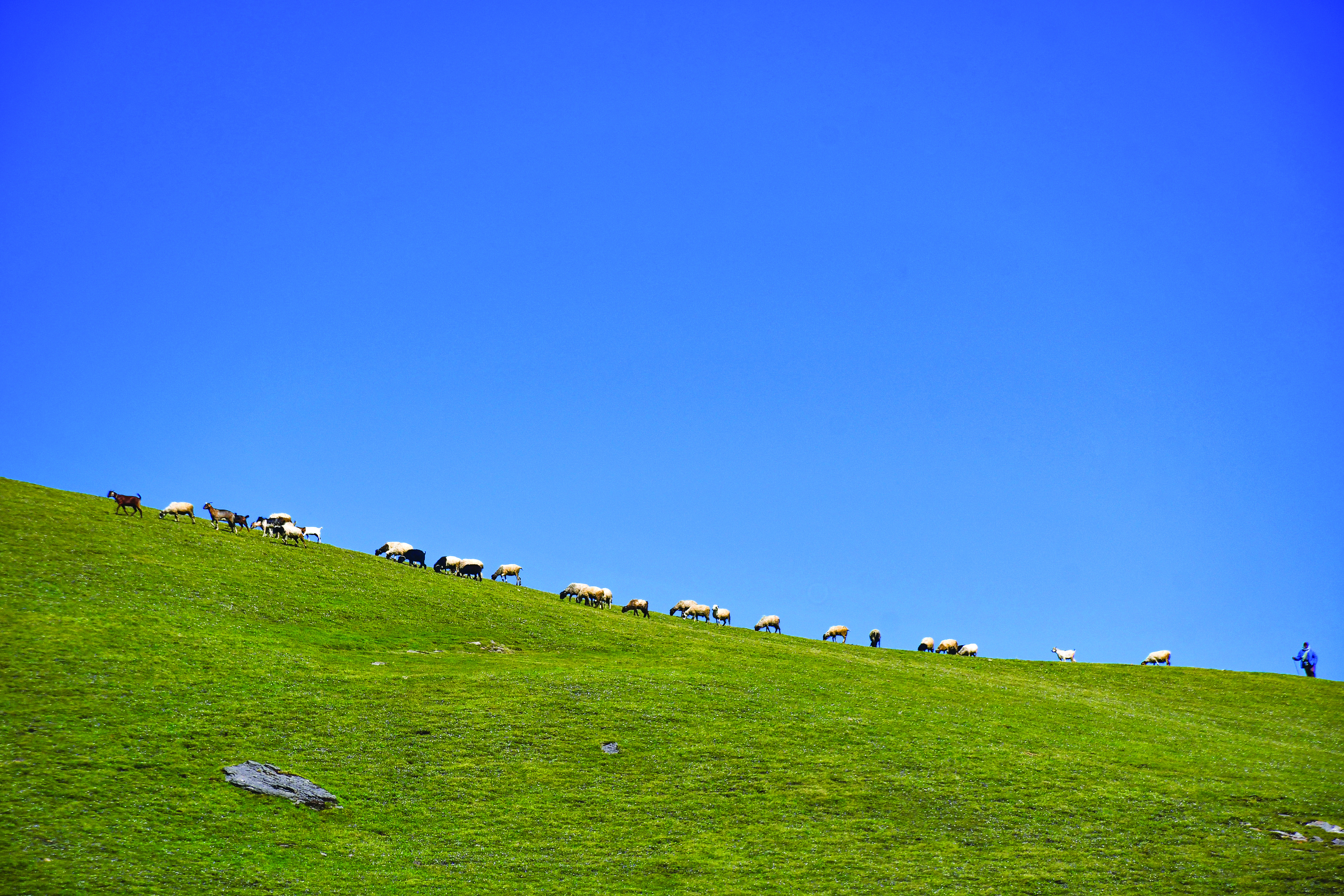 It is believed that Lord Shiva used to reside in the sacred territory of Mahabu Hill. Mahabu is located between the districts of Dailekh and Kalikot. However, the main temple dedicated to Mahabu Jagannath can be found in the direction of Kalikot. Dailekh and Kalikot can be reached via a mountain pass at the foot of the hill. A 1-hour walk from Bhanjyang leads to the main temple of M
It is believed that Lord Shiva used to reside in the sacred territory of Mahabu Hill. Mahabu is located between the districts of Dailekh and Kalikot. However, the main temple dedicated to Mahabu Jagannath can be found in the direction of Kalikot. Dailekh and Kalikot can be reached via a mountain pass at the foot of the hill. A 1-hour walk from Bhanjyang leads to the main temple of M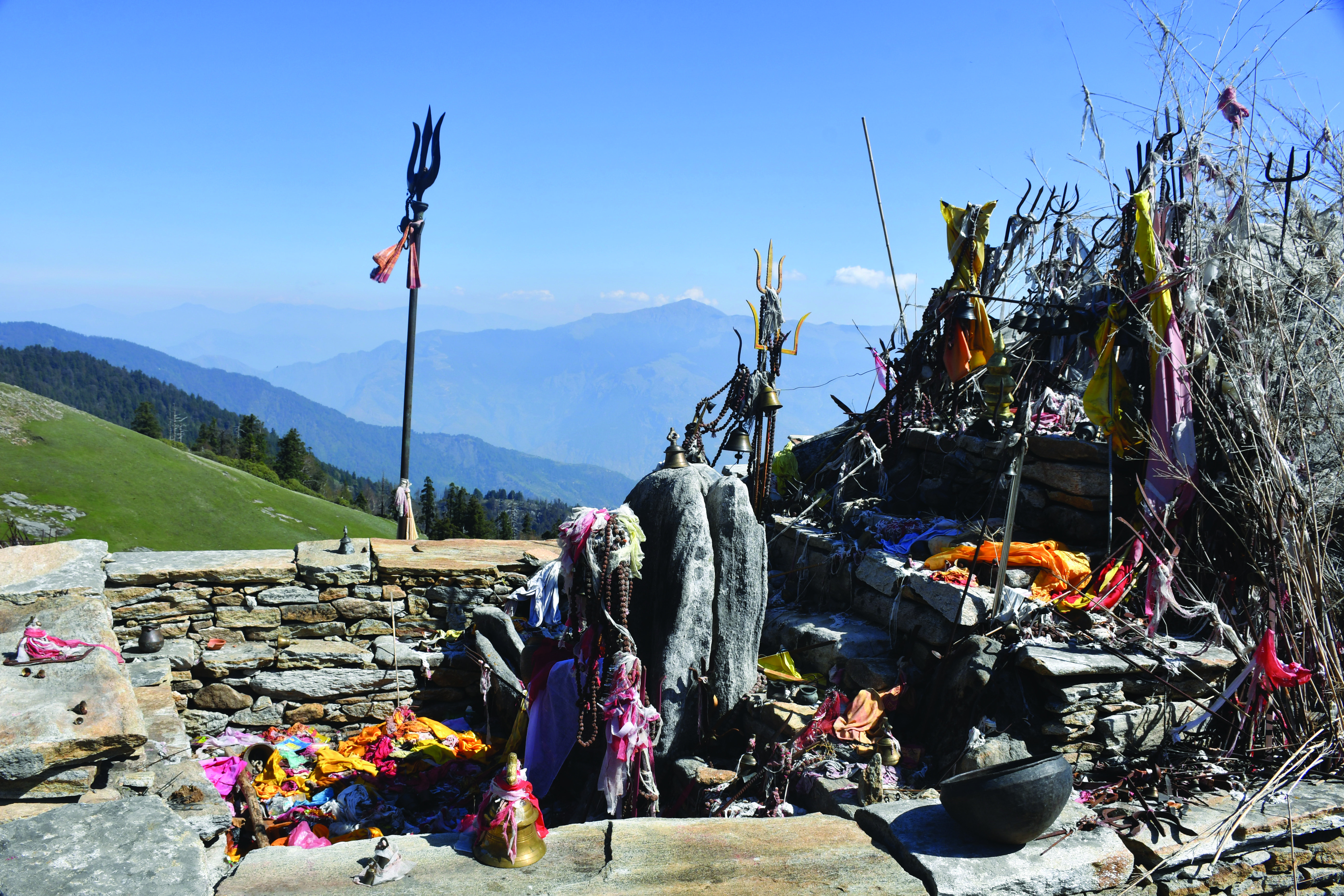 ahabu (4,100 meters). A rocky outcrop may be seen here, exposed to the sky. Wishes are thought to be granted by Mahabu Jagannath. On Janai purnima, a fair is held here. Visitors flock to the fair from all across Nepal, including Dailekh, Jajarkot, Kalikot, Banke, Bardia, and countless more cities offering tridents and bells. Mahabu is a stunning natural area with sheep and horses grazing peacefully in the verdant fields.
ahabu (4,100 meters). A rocky outcrop may be seen here, exposed to the sky. Wishes are thought to be granted by Mahabu Jagannath. On Janai purnima, a fair is held here. Visitors flock to the fair from all across Nepal, including Dailekh, Jajarkot, Kalikot, Banke, Bardia, and countless more cities offering tridents and bells. Mahabu is a stunning natural area with sheep and horses grazing peacefully in the verdant fields.
When the weather is clear, you can see Kanjirowa and Apishaipal from here. Rhododendron trees grow in the woodland at the base of the hill. The trees turn a vibrant scarlet during March. Similarly, during monsoon, ground flowers bloom everywhere while fog continuously covers the hill. Historically, travelers between Dailekh and Mahabu Bhanjyang took the route from Kalikot to Jumla on foot. This is an old route for trade. The 44-kilometer stretch of road between Dailekh Bazar and Mahabu Bhanjyang is now open for visitors.
The 88-kilometer route from Dailekh to Nagma (to Kalikot and Jumla’s markets) is currently under construction. It is now possible to take a jeep to Bhanjyang from Dailekh, however you won’t find any places to eat or sleep here but the villages in Mahabu’s belt provide regular access to food and snacks. Mahabu’s sacred land has excellent potential to become a yoga and meditation retreat. For this, the road which leads to Bhanjyang must be improved, and eco-friendly hotels and resorts should be constructed while focusing on branding and promotion of this area. The local rural municipality and the state government should focus on developing a spiritual tourism center here.
Dullu, Dailekh (An Open Museum of Heritages)
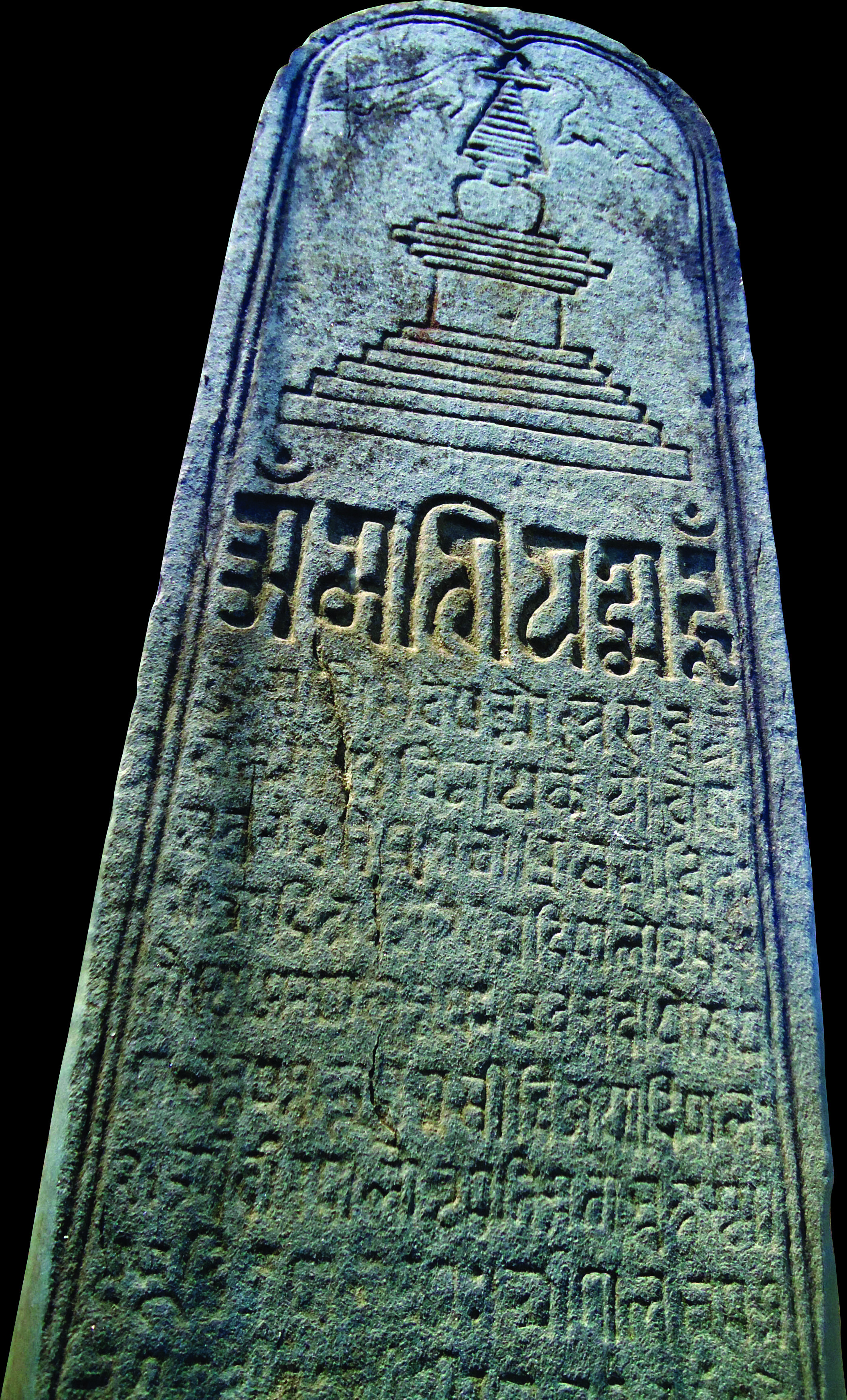
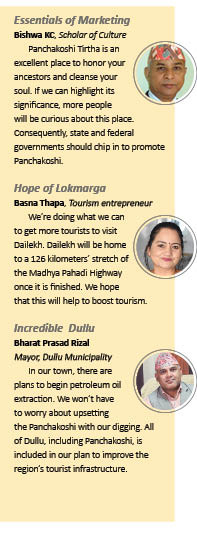
The Sinja Valley in Jumla is often regarded as the cultural cradle of the Khas people. During Baise’s rule, the Sinja kingdom flourished when Nagaraja founded the Sinja Empire. Ancient Sinja rulers established their summer capital in Sinja Valley and their winter capital in Dullu, Dailekh because winters brought severe weather conditions like snow and ice in Sinja. Ancient palaces, temples, pillars, and inscriptions have been unearthed in Dullu. A stone pillar was discovered here that had ancient Nepali language texts inscribed. This pillar, known as the Damupal’s pillar.
This stone inscription is widely recognized as the country’s oldest pillar written in Nepali languages erected in the year 1038 BC. There are writings regarding the Pal Kings on the pillar. Another heritage Kriti Khamba was erected in 1414 BS by Prithvi Malla, emperor of the Sinja Empire, and bears the names of heroes of the Khas Malla’s reign. Old temples and pillars like these can be found across the Dullu region. The two-hundred-year-old Pauwa is now home to the Dullu Cultural Museum. History records that on 6 November, 1789, during the reign of King Uttam Shahi, the Dullu kingdom fell under the control of unified Nepal. Until 1961, Dullu was a separate kingdom which later dissolved and merged into Dailekh.
Dullu, Nepa, Naulektuwal, Paduka, Badlamji, Chhiudipusakot, Gamaudi, Kalbhairav, Gauri, and Malika are the names of the nine historic village development committees that make up the current Dullu municipality. Dullu’s rural setting reflects in the city’s nature, culture, and way of life, and is hugely appealing.
The area has regular tourist amenities like restaurants and motels. The distance from Dailekh Bazar to Dullu is 24 kilometers. .jpg) Food Local fish dishes can be found all across Dailekh, including Dungeshwor, Chupra Bazar, Ramaghat, Asraghat, Lohore Bazar, Naumule, etc. Goat and Chyangra dishes are very popular among locals. Lunch consists of Roti, a type of flour bread, and vegetables. The local stores also sell milk and curd.
Food Local fish dishes can be found all across Dailekh, including Dungeshwor, Chupra Bazar, Ramaghat, Asraghat, Lohore Bazar, Naumule, etc. Goat and Chyangra dishes are very popular among locals. Lunch consists of Roti, a type of flour bread, and vegetables. The local stores also sell milk and curd.
How to Reach Dailekh?
The distance between Kathmandu and Dailekh is 650km by road. Flights from Kathmandu to Surkhet takes around 70 minutes by plane. The distance between Surkhet and Dailekh is 65 kilometers. Souvenirs Dailekh Bazar is a great place to shop for unique souvenirs such as hats, scarves, pencil cases, and purses. Dailekh Saugat Griha offers goods made in rural areas. Souvenir-worthy items from Dailekh include khukuri, suede shoes, satuwa herb, timmur, fish, oranges, niguro, and Nepali paper.
Birendra Nagar (Gateway to Karnali)
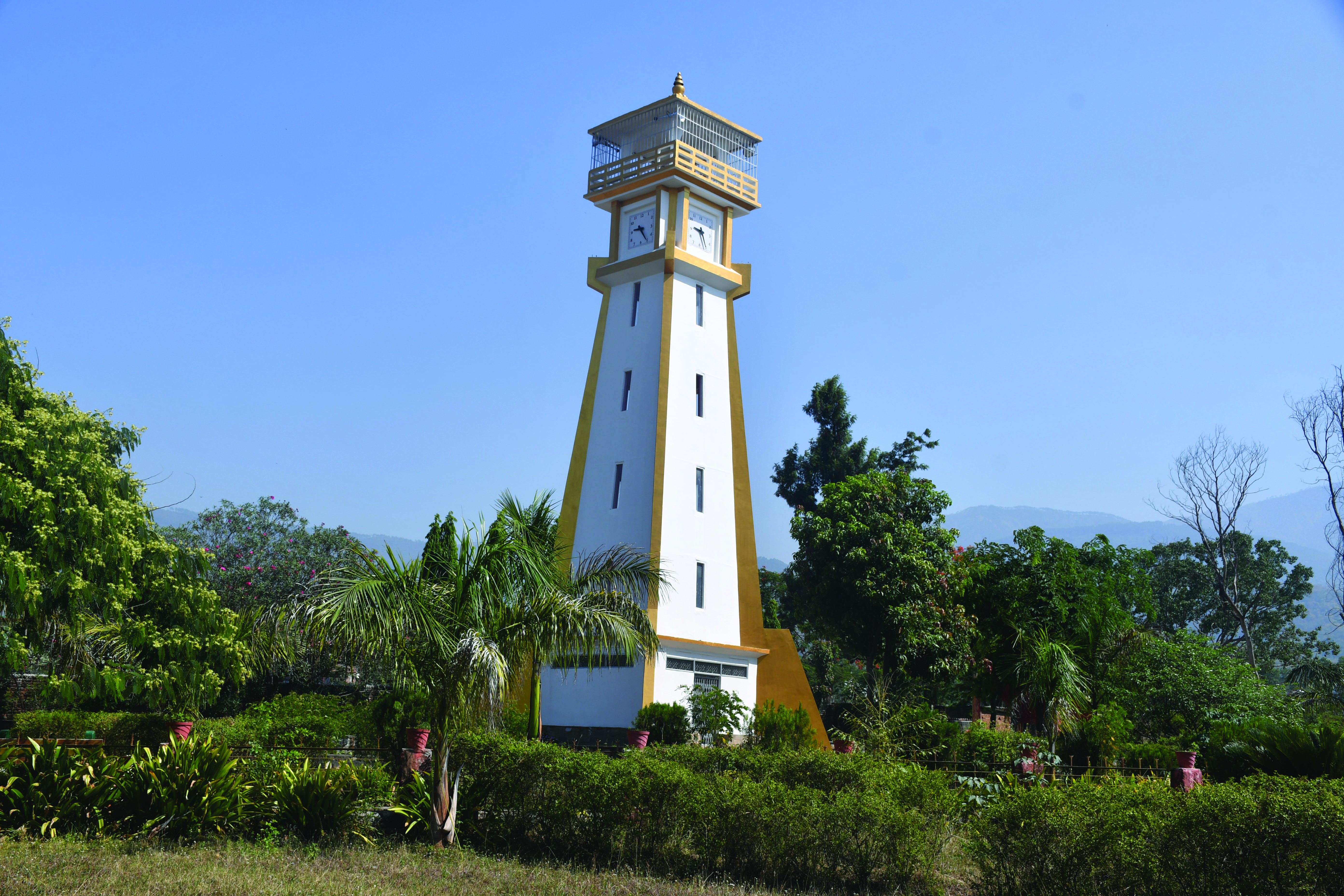 The provincial capital of Karnali is located in Birendranagar, the administrative center of Surkhet district. The cities of Dailekh, Jumla, Humla, Kalikot, Mugu, and Dolpa are all accessible from here. This is why travelers often refer to Birendranagar (625 m)
The provincial capital of Karnali is located in Birendranagar, the administrative center of Surkhet district. The cities of Dailekh, Jumla, Humla, Kalikot, Mugu, and Dolpa are all accessible from here. This is why travelers often refer to Birendranagar (625 m)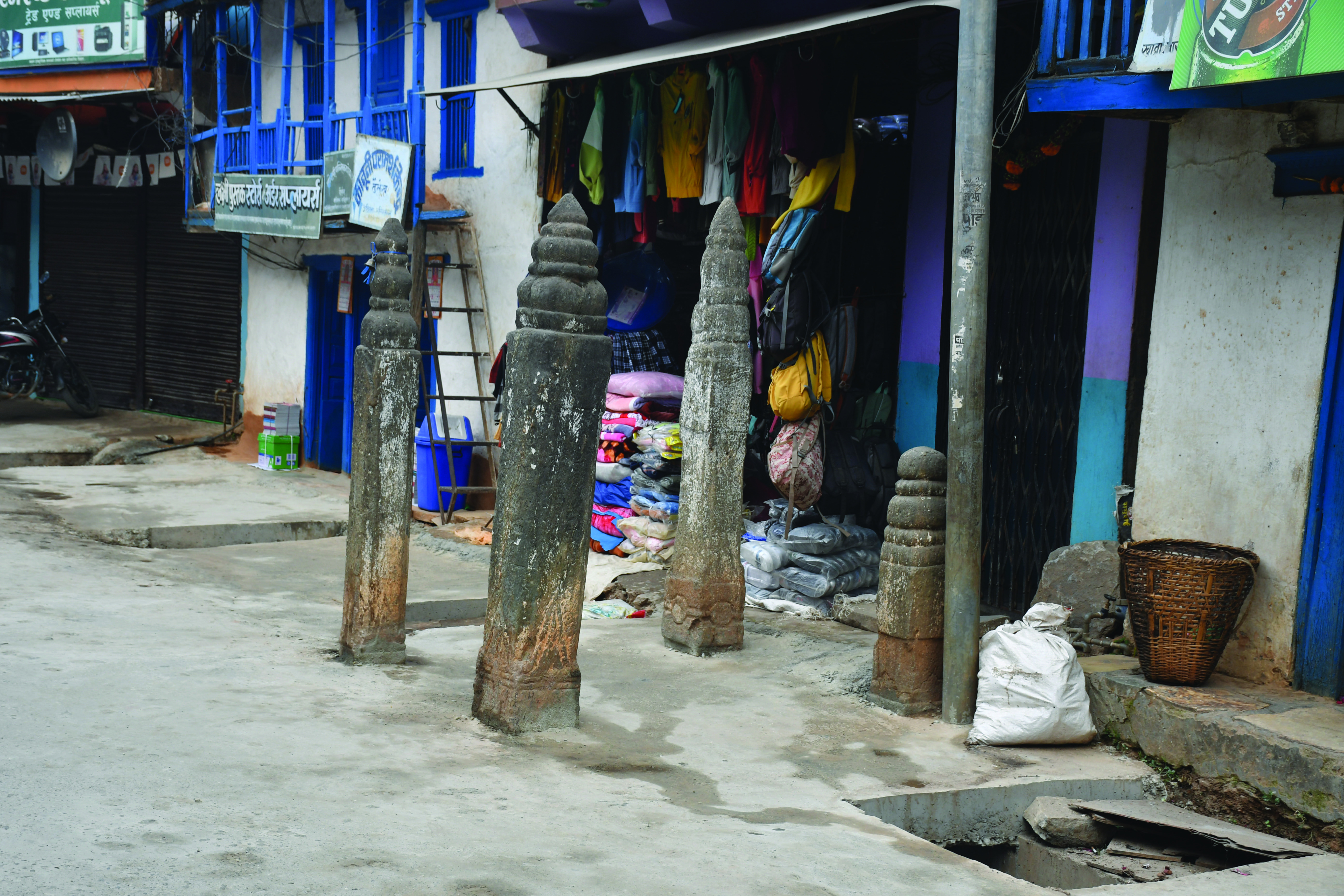 as “the gateway to Karnali.” The valley of Birendranagar is breathtaking.
as “the gateway to Karnali.” The valley of Birendranagar is breathtaking.
To its north are the Ranimatta, Ratanangla, and Chure hills of the Mahabharata range. Both the Bheri and Karnali rivers enter the city from opposite directions. The settlement started in 1966 in Birendranagar. Brahmins, Chhetris, Magars, Tharus, Kamis, Sarakis, Damais, Dashanami, Sanyasis, and many other castes live in the city. Castes from the Himalayas to the Terai have blossomed in Birendranagar, making the city a beautiful bouquet. The city possesses the essential infrastructure for forward progress. A hospital, campus, university, and airport are all available. There is an airport where you can regularly catch a flight to Kathmandu. Similar flights are made to the Himalayan regions of Mugu, Humla, Dolpa, and Jumla.
Most Popular Tourist Attractions in Birendranagar, Surkhet
Kakrebihar, the Deuti Bajai Temple, Bulbule Taal, the Clock Tower, etc., are among Birendranagar’s most popular tourist attractions. Kakrebihar is situated in a 175-hectare woodland. Both Hindus and Buddhists make the trip to this temple. There are now numerous restaurants, hotels/motels/resorts in the city. Nirmal KC, president of the Natta Surkhet, claims that Birendranagar has 1,000 air-conditioned rooms. From Kathmandu, you can go to Birendranagar in either 70 minutes via flight or 585 kilometers by car. Popular tourist destinations include Kakrevihar, Deuti Bajai, and Bulbule Lake in Surkhet. The winter months see an increase in the number of picnickers. They visit the adjacent hills even during the flowering season to see the birds. But we are not content with this; we are also working on branding and promoting Surkhet’s heritage to turn the district into a tourism hub.

